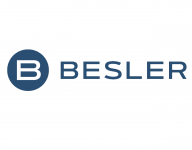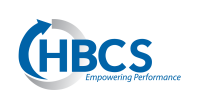Your nonprofit hospital’s response to COVID-19 likely provided significant community benefit over the past year. It might have earned positive press and goodwill as part of the widespread and rightly held perception that healthcare providers have stepped up heroically. Even so, your system, along with the rest, is on the hot seat with legislators and certain elements of the public who continue to focus on whether tax-exempt hospitals provide sufficient benefit to the community to maintain that status. As you work to recover from a year of disruption, don’t neglect to look back. Set out to not only capture but also broadcast your accomplishments and tell all aspects of your community benefit story. In doing so, you’ll spotlight your value to all stakeholders and strengthen justification for your tax-exempt status.
Understand there is a threat to your tax-exemption
Congress is increasing pressure on those with tax-exempt status. In 2020, then Senate Finance Committee Chairman Chuck Grassley (R-Iowa) wrote to every member of the Senate Finance and Judiciary committees, urging them all to tighten nonprofit hospital requirements under Section 501(r) of the Internal Revenue Code, including an increase in price transparency for consumers. Grassley is challenging whether nonprofit hospitals’ benefit to the community is equal to what taxpayers provide to the entity in the form of tax-exempt status. Grassley hasn’t announced whether he will run for office for an eighth term, but his actions could well endure through congressional colleagues who share his opinions and want to take up the mantle.
Pressure is not just coming from Congress. The New York Times published a 2020 opinion piece that cited criticisms of nonprofit hospitals, including high executive pay, a decrease in community benefit activities and a noteworthy lack of what is considered community support. In addition, focus persists on tax-exemption granted to large, financially successful systems that on their face perform similarly to their for-profit peers. JAMA Internal Medicine published a study that found that hospitals with superior financial performance provided disproportionally low levels of charity care. “With attention from Congress and the public alike, it is essential that systems of all sizes tell the full story of their community benefit enterprise,” said Erin Couture, Grant Thornton managing director of Healthcare Tax Services. “This is particularly important in light of COVID-19 and the continued interest in how healthcare is delivered.”
Use Form 990 to spell out pandemic impact and how your hospital makes a difference
A Form 990 is not just a tax filing; it is a publicly available vehicle that can communicate your hospital’s story. For example, your hospital probably had a dramatic shift in operations and resources in 2020 and 2021 — additional expenditures on personal protective equipment, community testing and vaccination, mental health support, etc. Perhaps you expanded your range of patient services as a result of COVID-19 and curtailed more profitable elective procedures during the crisis. Did you reallocate resources to focus on the increased number of patients and high-level support?
A hospital tells its story on the Form 990, especially on Schedule H. It is critical every year, and most importantly for these COVID-19 impact years, to carefully review expenditures and, where possible, incorporate that impact into community benefit expenditures. For example, one line of the calculation provides for the reporting of “Community Health Improvement and Community Benefit Operations.” To appropriately include expenditures on this line, the need must be established through the community health needs assessment (CHNA) or by other means such as a government or community directive. Closely review activities conducted as a result of COVID-19 to determine if the expenditures can be included in this line.
Schedule H reporting can be complex and may be difficult for regulators and legislators to assess. The percentage of community benefit expense is a clear and comparable number; focus on expenditures that can be included in the calculation. Additionally, describe programs in compelling narrative disclosures to make these numbers “come alive” for Form 990 readers.
COVID-19 caused a dramatic increase in the unemployment rate, which meant many individuals lost their employer-provided insurance coverage. If your hospital has seen an increase in individuals applying and receiving assistance under their financial assistance policies, make sure to capture this additional assistance on Schedule H. In addition, now might be the time to re-examine your definition of who is eligible for financial assistance and how you structure discount and payment plans to make sure these are included in community benefit calculations.
Go public with your community benefit
When your hospital has gone the extra mile to respond to community needs, work with your media and community relations teams to get the story out. Expand beyond posting on your website by using awareness advertising and social media. In many areas, not-for-profit health systems not only provide vital medical services but also are the largest employers in the local area. These positive points should not go unnoticed, said Mary Torretta, Grant Thornton Tax leader and principal in Healthcare Tax Services: “When a community understands more about the breadth of their local providers’ roles, state legislators realize they will not win constituents by assailing them.”
COVID-19 outreach has generated many positive stories for healthcare systems. For example, nonprofit hospitals have reallocated resources to community vaccination efforts, reassigned staff to assist in COVID-19 efforts, and made cuts in pay and benefits for highly compensated employees. These were the kinds of actions taken by two Minnesota healthcare systems. To continue to serve patients in the thick of the pandemic, Mayo Clinic, Minnesota’s largest employer, cut pay for one-third of its workers and furloughed others — and continued providing support in intensive-care units often filled or near capacity and having to enact significant system changes. And CentraCare exercised creative resource planning, requested (successfully) voluntary pay and benefit cuts, delayed projects and lined up bridge loans. Conduct research about such activities within your hospital to report them loudly and clearly.
Besides the impact on hospital facilities, COVID-19 has changed the way patients interact with affiliated physician practices. Make it known if your hospital extended financial assistance to your physician practices to subsidize additional medical care related to COVID. This is a compelling example of community benefit and should be included in your Schedule H presentations.
Revisit your CHNA
CHNAs are generally prepared every three years. Common areas of focus include long-term critical health matters such as obesity, diabetes and mental health. Pandemic responsiveness has not historically been identified as a significant community need, but because of the COVID-19 experience, we may see a shift of priorities to include preparation for infectious diseases as a primary community need. Think about expanding who has a voice in your CHNA. Consider including additional community leaders who have been involved or have evolved out of pandemic response.
The pandemic will pass; your proof must be permanent
Be prepared for a future of increased scrutiny. Create a plan for both the short- and long-term protection of your tax-exempt status.
Resources you already have in place — the CHNA, Form 990 and community relations professionals — can spread the word about actions benefiting your community even as circumstances change. Your plan can support your hospital’s financial health through the challenges ahead.















